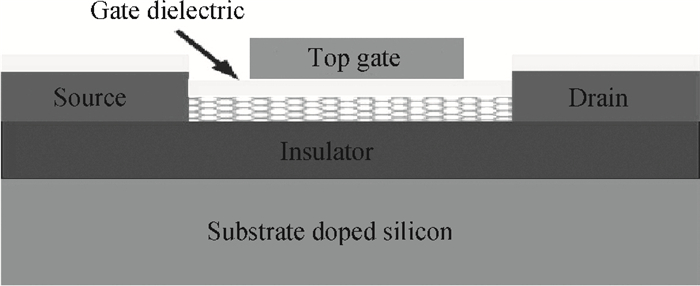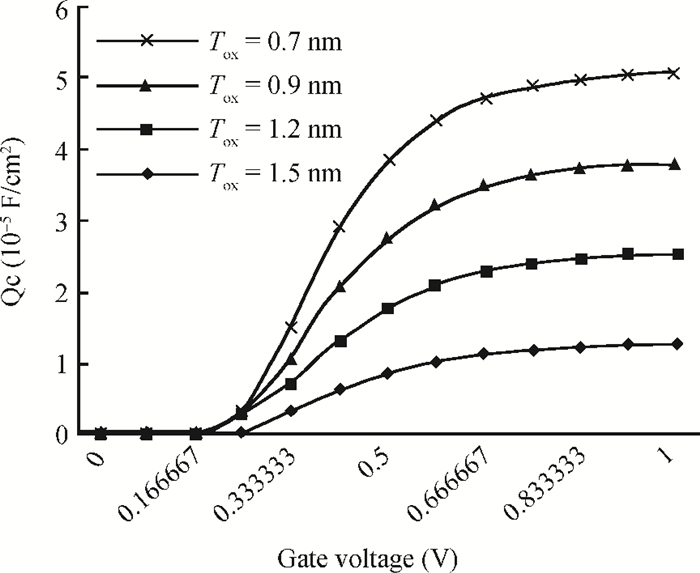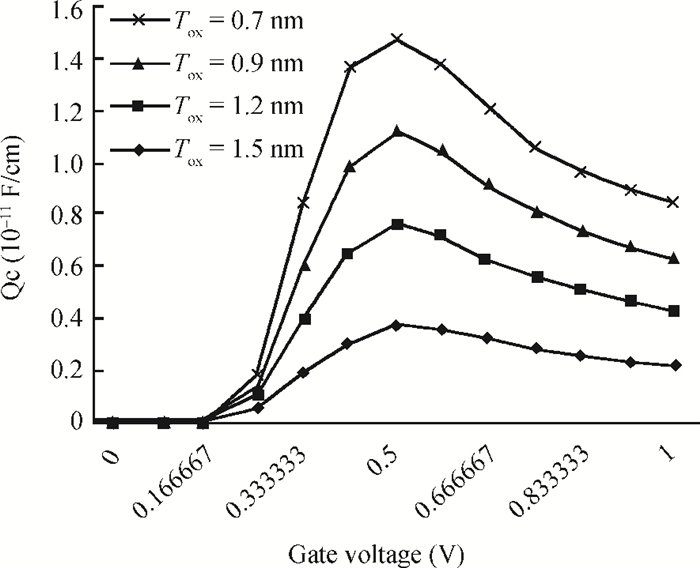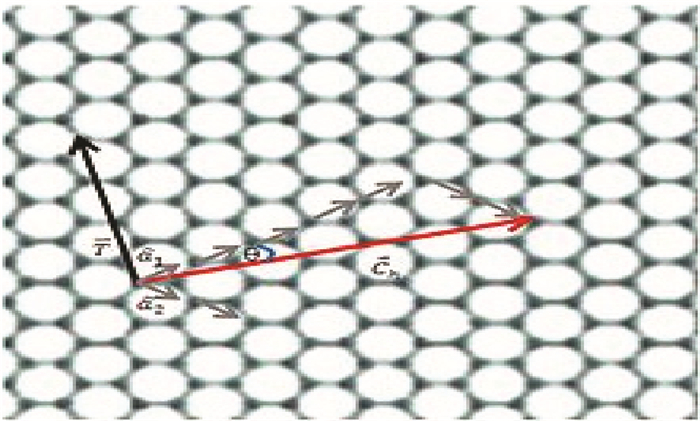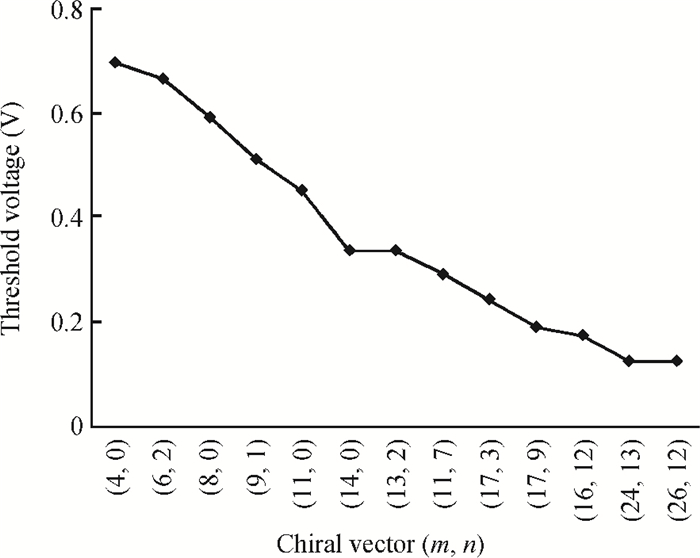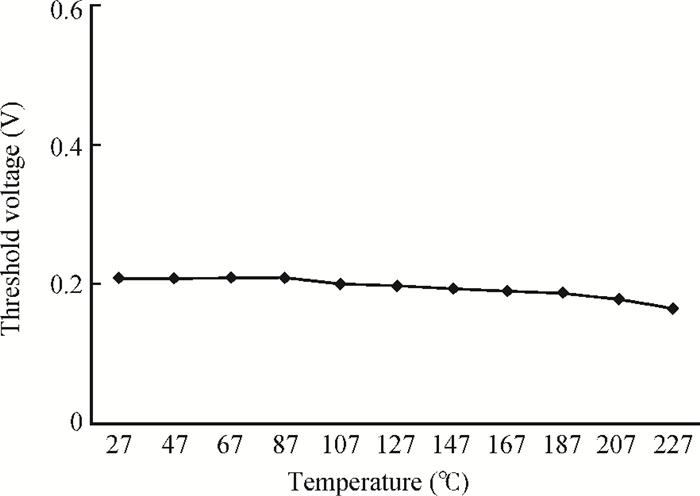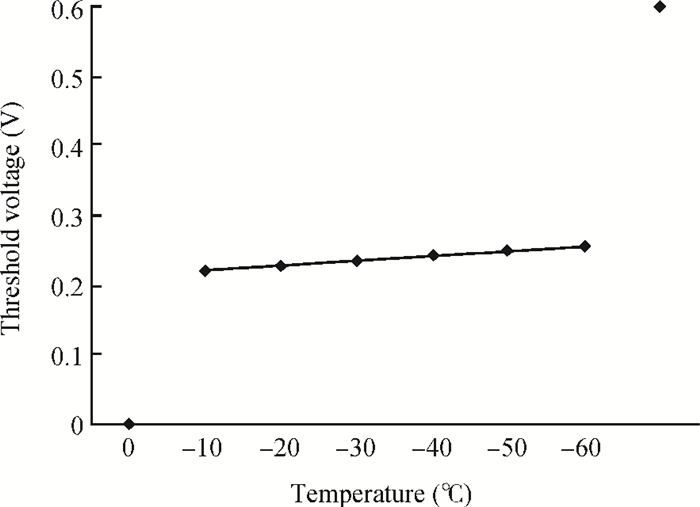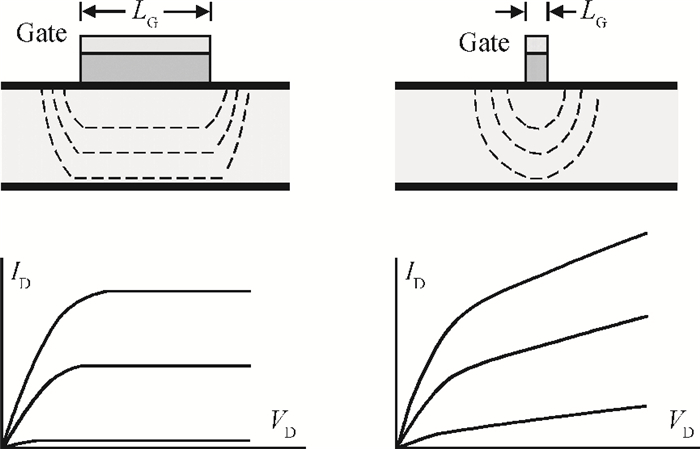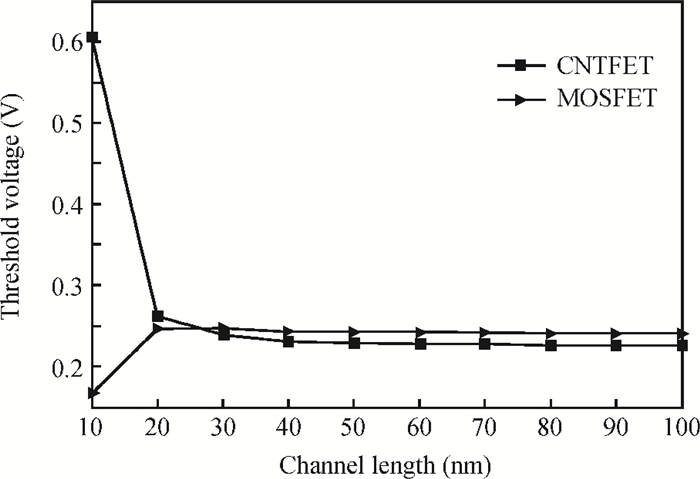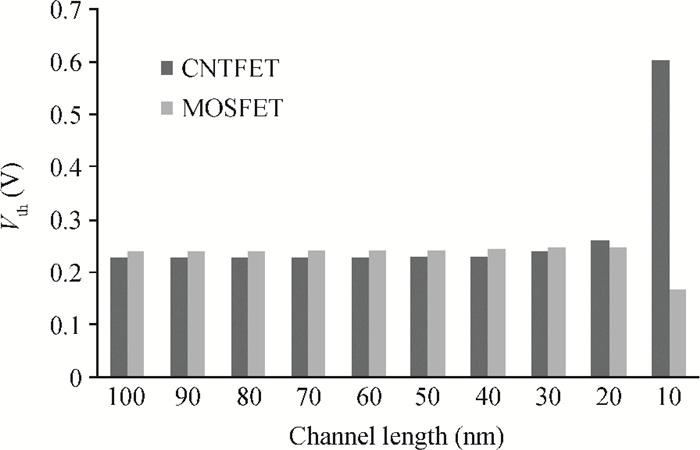| Citation: |
Sanjeet Kumar Sinha, Saurabh Chaudhury. Comparative study of leakage power in CNTFET over MOSFET device[J]. Journal of Semiconductors, 2014, 35(11): 114002. doi: 10.1088/1674-4926/35/11/114002
****
S K Sinha, S Chaudhury. Comparative study of leakage power in CNTFET over MOSFET device[J]. J. Semicond., 2014, 35(11): 114002. doi: 10.1088/1674-4926/35/11/114002.
|
Comparative study of leakage power in CNTFET over MOSFET device
DOI: 10.1088/1674-4926/35/11/114002
More Information
-
Abstract
A comparison of the CNTFET device with the MOSFET device in the nanometer regime is reported. The characteristics of both devices are observed as varying the oxide thickness.Thereafter, we have analyzed the effect of the chiral vector and the temperature on the threshold voltage of the CNTFET device.After simulation on the HSPICE tool, we observed that the high threshold voltage can be achieved at a low chiral vector pair.It is also observed that the effect of temperature on the threshold voltage of the CNTFET is negligibly small.After that, we have analyzed the channel length variation and their impact on the threshold voltage of the CNTFET as well as MOSFET devices.We found an anomalous effect from our simulation result that the threshold voltage increases with decreasing the channel length in CNTFET devices; this is contrary to the well known short channel effect. It is observed that at below the 10 nm channel length, the threshold voltage is increased rapidly in the case of the CNTFET device, whereas in the case of the MOSFET device, the threshold voltage decreases drastically.-
Keywords:
- MOSFET,
- CNTFET,
- temperature,
- oxide thickness,
- threshold voltage,
- channel length
-
References
[1] Moore G. Progress in digital electronics. IEDM Tech Digest, 1975:11[2] ITRS 2011. http://www.itrs.net/[3] McEuen P L, Fuhrer M S, Park H K. Single-walled carbon nanotube electronics. IEEE Trans Nanotechnol, 2002, 1(1):78 doi: 10.1109/TNANO.2002.1005429[4] Hoenlein W. New prospects for microelectronics:carbon nanotubes. Jpn J Appl Phys, 2002, 41:4370 doi: 10.1143/JJAP.41.4370[5] Martel R, Schmidt T, Shea H R, et al. Single and multi-wall carbon nanotube field-effect transistors. Appl Phys Lett, 1998, 73(17):2447 doi: 10.1063/1.122477[6] Javey A, Guo J, Wang Q, et al. Ballistic carbon nanotube fieldeffect transistors. Nature, 2003, 424:654 doi: 10.1038/nature01797[7] Baughman R H, Zhakidov A A, DeHeer W A. Carbon nanotubesthe route toward applications. Science, 2002, 297:787 doi: 10.1126/science.1060928[8] Collins P G, Avouris P. Nanotubes for electronics. Sci Amer, 2000, 12:62 http://www.ncbi.nlm.nih.gov/pubmed/11103460[9] Mintmire J W, White C T. Universal density of states for carbon nanotubes. Phys Rev Lett, 1998, 81(12):2506 doi: 10.1103/PhysRevLett.81.2506[10] Ijiima S. Helical microtubules of graphitic carbon. Nature, 1991, 354:56 doi: 10.1038/354056a0[11] Raychowdhury A, Mukhopadhyay S, Roy K. A circuitcompatible model of ballistic carbon nanotube field-effect transistors. IEEE Trans Comput Aided Design Integr Circuits Syst, 2004, 23(10):1411 doi: 10.1109/TCAD.2004.835135[12] Fregonese S, d'Honincthun H C, Goguet J, et al. Computationally efficient physics-based compact CNTFET model for circuit design. IEEE Trans Electron Devices, 2008, 55(6):1317 doi: 10.1109/TED.2008.922494[13] Deng J, Wong H S P. A compact SPICE model for carbon nanotube field-effect transistors including non-idealities and its application-Part Ⅰ:model of the intrinsic channel region. IEEE Trans Electron Devices, 2007, 54(12):3186 doi: 10.1109/TED.2007.909030[14] Pu S N, Yin W Y, Mao J F, et al. Crosstalk prediction of singleand double-walled carbon-nanotube (SWCNT/DWCNT) bundle interconnects. IEEE Trans Electron Devices, 2009, 56(4):560 doi: 10.1109/TED.2009.2014429[15] Dekker C. Carbon nanotubes as molecular quantum wires. Phys Today, 1999, 52(5):22 doi: 10.1063/1.882658[16] Luryi S. Quantum capacitance devices. Appl Phys Lett, 1998, 52:501 doi: 10.1063/1.99649[17] Dresselhaus M S, Dresselhaus G, Riichiro S. Carbon fibers based on C60 and their symmetry. Phys Rev B, 1992, 45(11):6234 doi: 10.1103/PhysRevB.45.6234[18] Wei B Q, Vajtai R, Ajayan P M. Reliability and current carrying capacity of carbon nanotubes. Appl Phys Lett, 2001, 79(8):1172 doi: 10.1063/1.1396632[19] Appenzeller J. Carbon nanotubes for high-performance electronics:progress and prospect. Proc IEEE, 2008, 96(12):201 http://ieeexplore.ieee.org/document/4399979/[20] Terada K, Muta H. A new method to determine effective MOSFET channel length. Jpn J Appl Phys, 1979, 18:953 doi: 10.1143/JJAP.18.953[21] Chern J G J, Chang P, Motta R F, et al. A new method to determine MOSFET channel length. IEEE Electron Device Lett, 1980, EDL-1:170 http://ieeexplore.ieee.org/xpls/abs_all.jsp?arnumber=1481138[22] Taur Y, Mii Y J, Logan R, et al. On effective channel length in 0.1μm MOS FET's. IEEE Electron Device Lett, 1995, 16:136 doi: 10.1109/55.372493[23] Jain S. Measurement of threshold voltage and channel length of submicron MOSFET's. Proc Inst Elect Eng, 1988, 135(1):162 http://ieeexplore.ieee.org/xpls/abs_all.jsp?arnumber=4644473 -
Proportional views






 DownLoad:
DownLoad:

